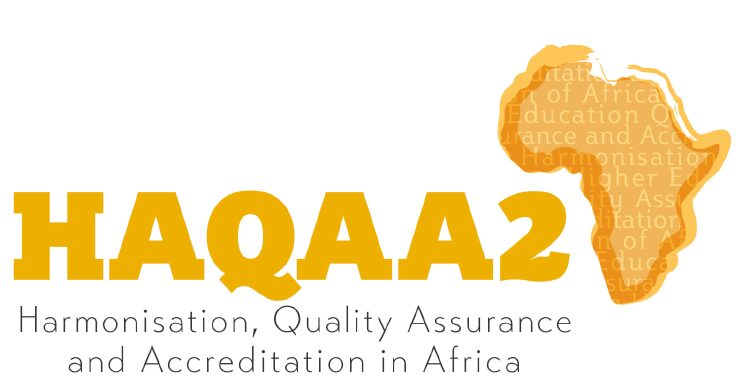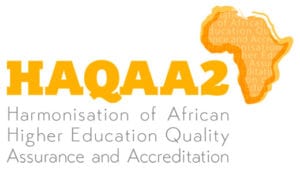
Professor Etienne EHILE is the Secretary General of the Association of African Universities. He is an Ivorian and a renowned physiologist. He graduated from the Faculty of Sciences of the University of Abidjan in 1974, where he obtained his Master’s degree. He then joined the University of Aix Marseille III (France) and obtained his Doctorate in Neurophysiology with honors in 1978. His research work was carried out at the Neurophysiology Laboratory of the National Center for Scientific Research (CNRS), France.
He is the former Director of Cabinet of the Ministry of Health and Public Hygiene of Côte d’Ivoire and former President of Nangui Abrogoua University, Côte d’Ivoire, where he spent two terms of 4 years each ( 2001-2010), before assuming his duties as Secretary General of the Association of African Universities (AAU) in August 2011. Professor EHILE is not new to the AAU because he was an active member of the board of directors of the AAU since 2005.
Professor EHILE has published over 50 scientific articles in various regional and international scientific journals from 1978 to 2019. From 1992 to date, Professor EHILE has held numerous management and administrative positions.
The Association of African Universities (AAU) was one of the “Harmonisation of African Higher Education Quality Assurance and Accreditation (HAQAA1) Initiative” Consortium members. How was HAQAA1 used to take forward AAU’s strategy to support quality in African universities?
E.E: HAQAA1 was very important to the AAU. It was a springboard that the AAU used to bring Africa’s National Quality Assurance Agencies (QAAs) and Ministries responsible for Higher Education in African countries together, for a course on ‘Common Understanding of Quality Assurance in African Higher Education” (the title of the HAQAA1 Training Courses). Amongst various important activities undertaken in HAQAA1, forty-four participants from across the continent took part in a training course that was offered in two languages (French and English). A mapping exercise was done during this phase, which helped the AAU to understand the state of quality assurance in Africa in particular, noting the different stages that different countries were in relation to establishing quality management systems in their institutions and at national level.
Another major outcome of HAQAA1 was the design and construction of the African Standards and Guidelines for Quality Assurance (ASG-QA) which are part of the foundation for African Higher Education harmonisation of quality assurance and accreditation. AAU promotes their adoption at national and institutional levels.
The AAU also benefitted in terms of knowledge and skills exchange with international quality experts: 15 institutions from 5 regions of African Higher Education took part in the AQRM institutional assessment and evaluation for self-improvement. AAU staff participated in expert teams comprised of other QA experts from Africa and Europe, to visit these 15 institutions. Much was learnt by AAU in terms of the areas in which institutions needed AAU support, in terms of, for example, capacity building.
What are the main challenges associated with harmonisation of higher education in Africa? How can these be overcome?
E.E: One of the main challenges has to do with language barriers; There is much translation that needs to be done in order to make sure dissemination is done in the four main languages used in Africa: English, Portuguese, French and Arabic. It was a huge success of HAQAA1 that the ASG-QA were produced in these four languages.
Secondly, there are differences in development of quality management systems, even between institutions in the same country. This then necessitates organising different types of training to suit different institutions. It also means a lot of work in trying to support those who are behind so that the continent can move forward at a similar pace.
Some of the challenges include security issues; AAU may not be able to be physically present in some countries because of civil and political situations, for example in Somalia and South Sudan. With willing institutions in these countries, AAU organises Quality Assurance workshops in nearby countries and also provides access to AAU webinars.
What were your main take-aways from HAQAA1 and how will HAQAA2 enhance them?
E.E: HAQAA2 accommodates the need for more QA workshops and trainings and scales up the number of institutional evaluations (AQRM). It also gives room for different ways of disseminating the ASG-QA for absorption by the African HE community. Hence it builds on HAQAA1.
As a main take away from HAQAA1, working with different European and African experts offered varying insights and perspectives to the AQRM verification visits. In addition, engaging with different consortium partners in various aspects of the HAQAA1 Initiative project implementation enhanced cooperation, strengthened understanding, and promoted information sharing between continents.
What is The AAU currently doing to support QA at the continental level, beyond HAQAA2?
E.E: The AAU is offering national and international workshops on different aspects of quality assurance, running quality assurance webinars as well as including topical QA topics in AAU major events like the General Conference and the Conference of Rectors/Vice Chancellors/Presidents, researchers and other HE stakeholders. AAU also hosts the AfriQAN network.
Soon there will be a call for Universities to participate in different activities of HAQAA2, such as the African Quality Rating Mechanism. What is your message to the Vice Chancellors and Rectors and Higher Education stakeholders in Africa regarding the opportunities provided by HAQAA2?
E.E: AAU encourages university leaders to take advantage of this opportunity and participate in these events for maximum benefit – specifically, the activities like the AQRM institutional assessment and evaluation for self-improvement. AAU also urges leaders to share the information within their universities, with other institutions in their countries and in other African countries so that the continent can move forward as one.

